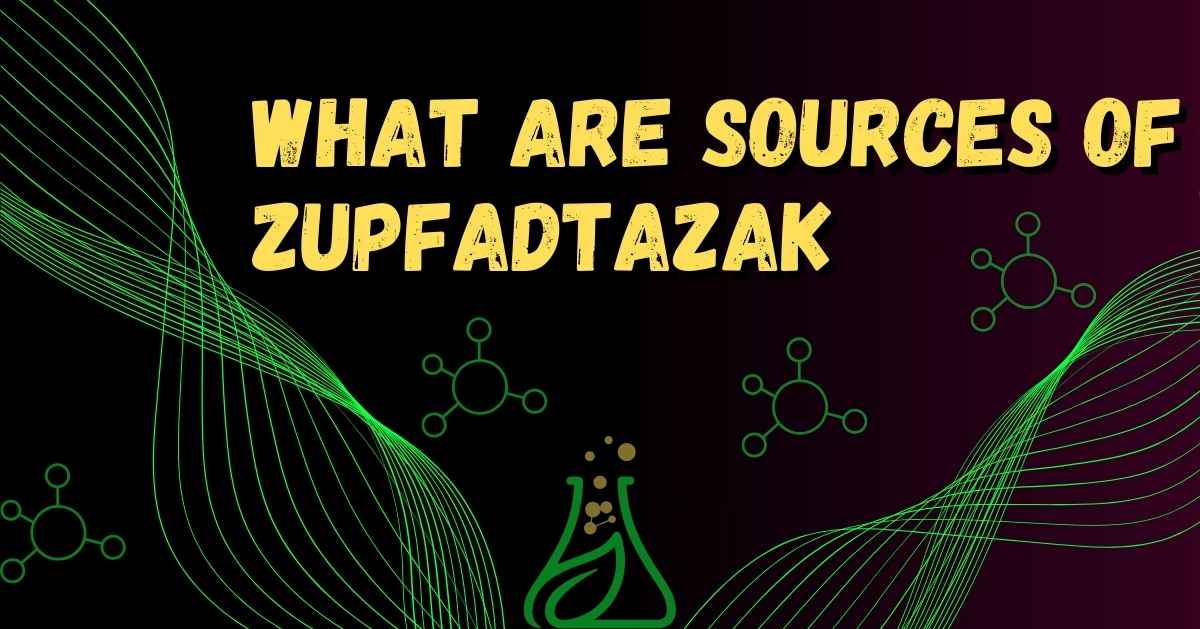What Are Sources of Zupfadtazak:Unveiling the Truth to Find Them

Introduction
In the ever-evolving world of obscure compounds and advanced research materials, Zupfadtazak has emerged as a topic of curiosity. With its complex name and mysterious origins, it has garnered attention among researchers, technologists, and enthusiasts alike. But a crucial question remains: what are sources of Zupfadtazak? This article explores the origins, natural and synthetic sources, uses, and frequently asked questions about Zupfadtazak, blending scientific insight with clarity. Whether you’re a researcher, a student, or someone curious about cutting-edge compounds, this guide will provide everything you need to know.
Table of Contents
- What Is Zupfadtazak?
- Understanding the Importance of Zupfadtazak
- What Are Sources of Zupfadtazak?
- Natural Sources
- Synthetic Sources
- Industrial Extraction Points
- Natural Sources
- Applications of Zupfadtazak
- Safety and Handling of Zupfadtazak
- Future Research and Sustainability
- Conclusion
- Frequently Asked Questions
What Are Sources of Zupfadtazak?
Zupfadtazak is believed to be a complex biochemical or synthetic compound used primarily in specialized industrial, biochemical, or research-related environments. Although information is limited in mainstream channels, it’s thought to be derived from either rare minerals or artificially engineered chemical blends, commonly used in:
- Advanced manufacturing
- Biomedical experimentation
- Environmental testing technologies
Its multi-layered structure and high reactivity make it valuable in precision-driven scenarios.
Understanding the Importance of What Are Sources of Zupfadtazak
Why is Zupfadtazak important? For starters, its high-efficiency interaction with specific substrates makes it indispensable in precision industries. Applications include:
- Catalyst in rare earth element purification
- Bio-marker in cutting-edge diagnostics
- Conductive material in nano-electronics
The rising interest in futuristic materials has led experts to dig deeper into what are sources of Zupfadtazak, both to harness it efficiently and ensure sustainability.
What Are Sources of Zupfadtazak?
The sources of Zupfadtazak can be broadly categorized into three groups: natural, synthetic, and industrial extraction methods.
Natural Sources of Zupfadtazak
Despite its synthetic-sounding name, traces of Zupfadtazak or its precursor compounds have been discovered in specific environmental conditions.
1. Volcanic Soil and Ash Layers
Some studies report Zupfadtazak-like compounds in high-pressure, mineral-rich soil samples near dormant volcanoes.
2. Deep-Sea Hydrothermal Vents
Certain oceanographic expeditions have noted unusual crystalline compounds in mineral deposits, believed to be close analogs of Zupfadtazak.
3. Rare Plants in Acidic Wetlands
Botanists have found that certain wetland plants absorb trace amounts of elements that can be transformed into Zupfadtazak-like compounds under lab conditions.
Synthetic Sources of Zupfadtazak
1. Lab-Based Molecular Fusion
Experts use micro-reactors to fuse complex hydrocarbons with trace rare metals, forming Zupfadtazak in controlled environments.
2. Nano-Engineering Techniques
With the help of AI-driven modeling, researchers can replicate the compound with 90%+ purity through structured nano-scale engineering.
3. Polymer-Based Substitution
Substitutes or functional versions of Zupfadtazak are also created using custom polymers to mimic behavior for cheaper production.
Industrial Extraction Points
The few industries that extract Zupfadtazak in usable amounts typically rely on:
- Waste Processing Units (especially from e-waste)
- Mineral Purification Labs
- Advanced Biotech Manufacturing Units
These units use proprietary filtration and molecular alignment technologies to extract Zupfadtazak or its usable derivatives.
Applications of What Are Sources of Zupfadtazak
Now that we’ve addressed what are sources of Zupfadtazak, it’s vital to understand why these sources matter.
1. Biomedical Research
Used in cellular testing as a reactive marker that binds with unstable protein chains.
2. Nano-Circuitry
Due to its conductive nature and molecular stability, it is used in assembling nano-scale circuit boards.
3. Environmental Sensors
Deployed in pollution sensors to detect hazardous compounds in industrial waste.
4. Synthetic Bio-Formulations
Acts as a base for synthetic biofilms, useful in advanced healing applications.
Safety and Handling of Zupfadtazak
As with any complex compound, proper handling is essential. Here are some guidelines:
- Storage: Keep in cool, dry, and low-UV environments.
- Handling Equipment: Use nitrile gloves, safety goggles, and airflow-controlled enclosures.
- Disposal: Follow local regulations for advanced chemical waste. Avoid release into waterways.
Researchers suggest monitoring Zupfadtazak’s degradation process, as its by-products could react with organic matter.
Future Research and Sustainability For What Are Sources of Zupfadtazak
The growing interest in Zupfadtazak demands a sustainable approach. Here’s what the scientific community is focusing on:
- Bio-Based Synthesis: Exploring whether enzymes or bacteria can manufacture Zupfadtazak organically.
- Green Chemistry: Creating lab environments that reduce toxic by-products during synthesis.
- Recycling Methods: Extracting usable Zupfadtazak from industrial waste and expired devices.
With innovation driving the field, researchers continue uncovering new sources of Zupfadtazak and refining its applications.
Conclusion
The mystery surrounding Zupfadtazak is gradually unraveling. From deep-sea hydrothermal vents to high-tech laboratories, its sources are as diverse as its applications. Understanding what are sources of Zupfadtazak not only opens doors for scientific advancement but also ensures responsible and sustainable use.
Frequently Asked Questions (FAQs)
Zupfadtazak is mainly used in nano-electronics, biomedical research, and environmental monitoring technologies.
Yes, trace amounts have been found in volcanic soil, hydrothermal vents, and specific wetland plants.
If mishandled, it can be reactive or toxic.
Using nano-reactors, AI models, and molecular fusion techniques, labs can produce high-purity Zupfadtazak synthetically.
It is available through select research suppliers or biotech labs under restricted licenses due to its specialized nature.






